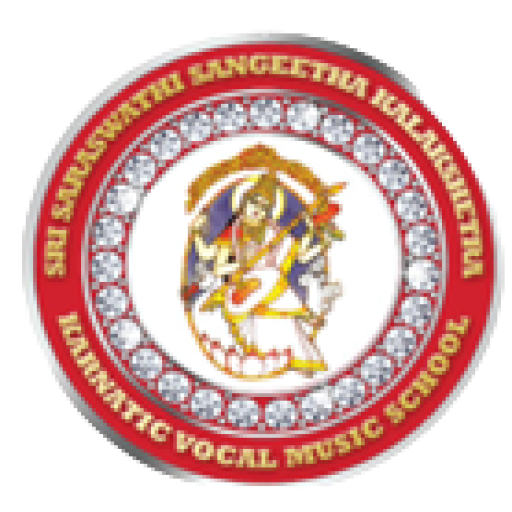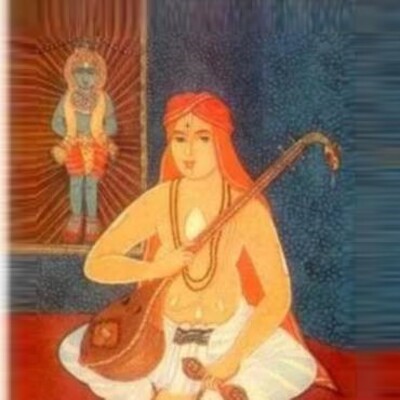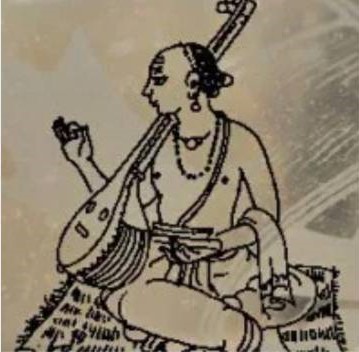“SSK Karnatic Beginner Course: A Harmonious Journey to Musical Proficiency starting ages 7 and up .The SSK Beginner classes offer an enchanting initiation into the world of Karnatic music, catering to aspiring singers with little or no prior experience. Our curriculum artfully blends the exploration of swarams (musical notes) with the practical application of bhajans (devotional songs), ensuring that students embark on a comprehensive and delightful musical voyage.
In this beginner level course, students delve into the art of singing bhajans while honing their sense of rhythm and swaras. They are introduced to the enchanting realm of Dikshitar Nottuswarams, where the nuances of pitch and shruti (musical pitch) are thoughtfully emphasized. The primary objectives of our beginner level course encompass introducing students to swaras through familiar melodies, teaching them simple shlokas (hymns), bhajans, and songs, and acquainting them with the fundamental concepts of Shruti (pitch) and thala (rhythm).
The fundamental syllabus of Karnatic music, a tradition celebrated as ‘that which is pleasing to the ears,’ has been nurtured over centuries in South India. Sri Purandara Dasa, a revered saint in the sixteenth century, bestowed us with the foundational lessons in Karnatic music, including Saralee Swarams (basic lessons), Alankarams (musical note patterns), Pillari Geethams (simple songs), Ghana raga Geethams (melodious compositions), and prabandhas (traditional compositions). Our syllabus is thoughtfully designed to offer graded lessons that gradually unfold the beauty of music, harmoniously blending notes with rhythm (thalam).
At SSK, we recognize the significance of building a strong foundation in Karnatic music. Therefore, our beginner course strives to instill a deep appreciation for this timeless art form while providing students with the necessary skills and knowledge to embark on their musical journey with confidence and joy.”
The paragraph discusses Karnatic vocal classes and the key areas of focus for beginners. It emphasizes the importance of a strong foundation in Karnatic music and highlights the following aspects:
- Swaras (notes): Karnatic music is based on a system of seven basic swaras, and beginners learn to recognize and sing these notes accurately.
- Rhythm: Karnatic music involves complex rhythmic patterns known as talam. Beginners are trained to develop a sense of rhythm and learn basic talas.
- Devotional aspect: Karnatic music often includes songs dedicated to Hindu gods and goddesses. Understanding the meaning and mythology behind these songs is important.
- Voice culture: The voice is considered an instrument in Karnatic music, so developing good vocal technique, including breath control, diction, and tone production, is essential.
- Sangeetha Sadhana (Practice): Regular practice is emphasized to improve in Karnatic music, and students are encouraged to allocate dedicated time each day for singing or playing their chosen instrument.
The beginner level course format includes singing bhajans, focusing on rhythm and swaras, learning Dikshitar Nottuswarams, and emphasizing pitch and shruti. The objectives of the beginner level course include introducing students to swaras through familiar tunes, teaching simple shlokas, bhajans, and songs, and familiarizing them with the concept of Shruti and thala.
The basic syllabus of Karnatic music covers Saralee Swarams (basic lessons), Janta Swarams (repetitive patterns), Thara Sthayi Swarams (high pitched notes), Mandara Sthayi Swarams (low pitched notes), and Datu Swarams (skipped notes). It also includes Alankarams, which combine musical notes with rhythm.
Karnatic music, meaning “that which is pleasing to ears,” developed and nurtured in South India over the centuries. Sri Purandara Dasa, a prominent saint in the sixteenth century, composed the basic lessons in Karnatic music, including Saralee Swarams, Alankarams, Pillari Geethams, Ghana raga Geethams, and prabandhas. The syllabus aims to provide graded lessons and impart the beauty of music through the application of rhythm (thalam).
Anyone who has an interest and passion to learn music and ages 7 and up can join beginner course.
The basic syllabus of Karnatic music includes the following elements:
- Saralee Swarams (15): These are basic lessons that introduce students to the seven basic swarams (notes). They are set in the ragam Mayamalavagoula and students learn to sing them in three different speeds.
- Janta Swarams (9): Lessons where the same note occurs multiple times in repetitive patterns. Students practice singing these patterns accurately.
- Thara Sthayi Swarams (5): Lessons focusing on high-pitched notes, taking students to the higher octave notes in the Thaira sthayi range.
- Mandara Sthayi Swarams (4): Lessons emphasizing low-pitched notes, familiarizing students with the lower frequency notes.
- Datu Swarams (4): Similar to Saralee Swarams, but with non-continuous note patterns where one or more notes are skipped in the ascending or descending order.
- Alankarams (7): Compositions written by Sri Purandara Dasa, combining swarams (musical notes) with thalam (rhythm). Alankarams add beauty to music through the application of different thalams such as Druva, Matya, Roopaka, Jampe, Thriputa, Ata, and Eka.
- Ragamalika: In addition to training with swarams, students are taught level-based compositions such as Nottuswarams, Bhajans, Thayagaraja divyanam keerthanas, and compositions by other composers. They are encouraged to perform these during recitals and local events.
By following this syllabus, students gradually develop their understanding and proficiency in Karnatic music, progressing from basic exercises to more complex compositions, and expanding their repertoire.
Course Outcome: Upon completing the Basic Beginners Course in Karnatic vocal classes, students will have accomplished the following goals:
Proficient Control in Singing Vocal Exercises: Students will attain a high level of proficiency in singing a variety of vocal exercises, including Saralee Swarams, Janta Swarams, Thara Sthayi Swarams, Mandara Sthayi Swarams, and Datu Swarams. They will demonstrate precision and finesse in controlling pitch, tone, and clarity while performing these exercises.
Musical Memory Mastery: Students will cultivate a robust musical memory, enabling them to recall and reproduce the vocal patterns covered throughout the course. This includes the ability to memorize the sequence and order of swaras (musical notes) and rhythm patterns present in various exercises.
Versatile Tempo Rendering with Thalam: Students will develop the skill to render vocal patterns in three distinct speeds, providing versatility in tempo. They will practice singing these exercises at slow, medium, and fast speeds while maintaining impeccable accuracy and synchronization with thalam (rhythm).By attaining these objectives, students will have established a strong and well-rounded foundation in Karnatic vocal music. This accomplishment prepares them for a seamless transition to higher levels of learning and performance within the Karnatic music tradition, setting the stage for a promising musical journey ahead.”
At what age can I start classes for my kids?
Do you take a trial class?
Is it usually a group class or an one-on-one class?
What languages are these bhajans?
Do you work to improve students' pronunciation?
Is it practical for a parent and kid to be a student at the same time?
Can a Beginner participate in Events conducted by the school?
Is there an extra charge for access to Google Classroom?
Is it necessary to have accompaniment on a percussion instrument like tabla or mridangam at Beginner level?
Book an orientation
SSK School Year ( Sep -May )
- 40 group sessions
- Duration 60 mins
- Min 3 Students in a group to start
- Ages 7 and up & Adults



